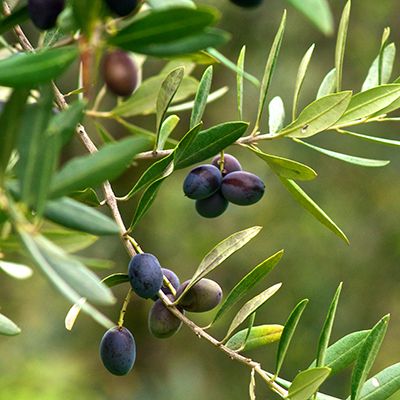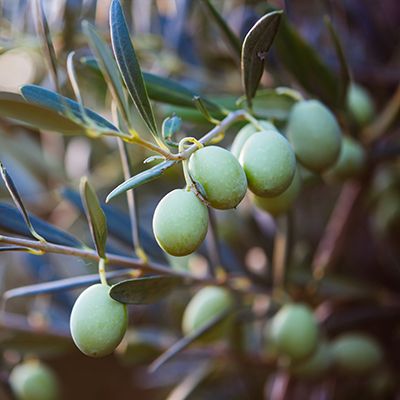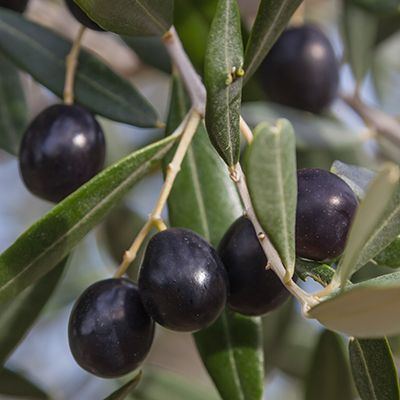


Olive Trees
Olive trees (Olea europaea) are mentioned in the Old Testament, Boradine refers to them in “Prince Igor”, and the archeological evidence has them associated with humans at least 8,000 years ago and their fossilized remains date to 37,000 years B.C. Today, there are about 800 million olive trees in the world including at least 700 cultivars, each with a different sort of fruit. Worldwide, the oil and olive business add up to a turnover that approaches $10 billion.
Olive trees are native to the Mediterranean and now are found in all the milder areas of California and Arizona. The trees were brought to the new world by Spanish missionaries in the 1500’s. Their life expectancy is listed as 500 years, so with reasonable care, an olive tree will outlive most of us.
A mature, unpruned olive tree can become 50 feet tall by 30 feet wide. Pruned, it will be about 20 by 15 feet, but it can be kept even smaller if pruning is begun at an early age. If the tree is planted from a five gallon container, it will produce some fruit the following year. It has no chilling requirements and a pollenizer is not required.
Olive trees will survive in poor, rocky soils but, as with other plants they will flourish in well drained soils enriched with organic matter. Heavy clay soils with poor drainage will not provide a successful environment for olive trees. (See our Care Guide for Soils for amending soils in the Bay Area.)
Of the 700 olive cultivars, about half a dozen are usually available. Ascolana, Manzanillo, Mission and Sevillano are most suitable for the Bay area homeowner who wishes to harvest and process the fruit. ‘Manzanillo’ produces the largest fruit, but ‘Mission’ is easier to process. ‘Swan Hill’ produces little or no fruit or pollen and ‘Little Ollie’ is a six to eight foot dense shrub with practically no fruit. These latter two are suitable as ornamental trees or hedges or as container plants.
Olive trees produce fruit on two-year old wood. If fruit is desired, the trees should be pruned lightly every year or two. If the tree is grown primarily as an ornamental, it may be trained in various ways (bush or headed) or allowed to grow naturally. The olive will naturally take on a very gnarled method of growing and when this effect is desired, do not remove interfering branches or those rubbing against one another. Dead wood should be removed as it appears at any time of the year. All cuts
must be made very close, to their origin, leaving a smooth wound with no stub. If the tree is to be only ornamental, it would be wise to spray the tiny white spring flowers with Monterey Florel® Brand Growth Regulator at the rate of six and one-half tablespoons per gallon of water. When sprayed as directed, this will prevent fruit formation and the unsightly mess of fallen fruit.
Olive trees should be fertilized lightly, twice a year; about Memorial Day and Labor Day. Fertilize at the dripline with Master Nursery® Fruit Tree and Vine Food. Mature trees will need a deep watering once a month. Trees one to five years old should receive similar watering once a week, between May and October during a normal season.
Olive trees are hosts to numerous insect pests and a few diseases. Among the insect pests are aphids, black scale, borers, moths and worst of all the olive fruit fly. Most of the pests can be controlled with Master Nursery® Year-Round Spray Oil or one of the pyrethrin’s. The olive fruit fly is a particularly serious problem for the home gardener who plans to harvest olives for consumption; more so, for the commercial orchardist.
Olive fruit fly larvae feed exclusively in olive fruits resulting in direct pulp destruction rendering the fruits useless for canning and lowering oil quality. Where olive fruit fly is established and not controlled, up to 80% of the oil value has been lost and in some varieties of table olives, 100% of the crop has been destroyed.
There are no native predators known to attack the olive fruit fly. Control is begun by gathering and destroying all fallen fruit during fall and spring. In early June, olive fruit fly traps should be hung in olive trees to trap the first fruit flies and begin spraying. The only sprays approved for controlling the olive fruit fly are Monterey Garden Insect Spray or Bonide© Captain Jack’s DeadBug Brew®. Both of these organically approved insecticides contain the active ingredient Spinosad (0.5%). The insecticides are diluted to two ounces per gallon of water. Spraying is begun when the flies begin to show up in the traps (about mid-June) and is repeated at 7 to 10 day intervals for up to six applications per season.
If the trees are only ornamental, the most practical solution to the olive fruit fly problem will be to spray the tree with the Monterey Florel® Brand Growth Regulator to eliminate the development of any olives and the problem of mushy fruit.